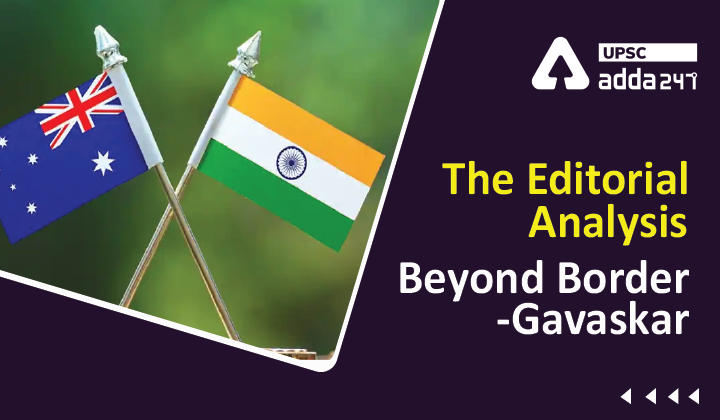Table of Contents
India-Australia Economic Cooperation and Trade Agreement (ECTA)- Relevance for UPSC Exam
- GS Paper 2: International Relations- India and its neighbourhood- relations.

India-Australia Economic Cooperation and Trade Agreement (ECTA)
- Recently, the India-Australia Economic Cooperation and Trade Agreement (ECTA) was signed between India and Australia.
- India-Australia Economic Cooperation and Trade Agreement (ECTA) is a key step in enhancing bilateral economic ties between both littoral Countries.
- India-Australia Economic Cooperation and Trade Agreement (ECTA) also reflects the growing strategic alignment between New Delhi and Canberra.
India-Australia Relations
- Colonial Legacy: India’s strongest ties with Australia had hitherto largely centred around their common colonial legacy of cricket, best exemplified in the Border-Gavaskar Trophy.
- India-Australia Virtual Summit: in India-Australia 2020 virtual summit, both countries decided to elevate the relationship to the level of a Comprehensive Strategic Partnership.
- Defence and strategic ties have gained significant traction and the latest ECTA has been hammered out in just six months since negotiations restarted.
IndAus ECTA: India Australia Economic Cooperation and Trade Agreement
India-Australia Economic Cooperation and Trade Agreement (ECTA)
- Coverage: The ECTA covers the gamut of economic and commercial relations including trade in goods and services, rules of origin, technical barriers to trade, dispute settlement and customs procedures.
- Goal of ECTA: Targeting a goal of doubling bilateral trade to about $50 billion in five years, from the $27.5 billion logged in 2021.
- Pragmatic Approach: Both countries adopted a pragmatic approach by setting aside contentious issues such as the Dairy sector.
- Dismantling or Lowering Tariff Barriers:
- Australia has agreed to eliminate tariffs on more than 96% of Indian exports, including several labour-intensive industries.
- India will allow the duty-free entry of 85% of Australian goods exports by value from day one and within the next 10 years cut tariffs to zero on another 5% of Australian merchandise.
- Movement of People: A key area that has been included in the movement of ‘natural persons’, which is inextricably linked to fostering closer people-to-people links and is imperative in efforts to promote bilateral trade in services.
- ECTA aims to support access for a range of Australian and Indian skilled service providers, investors, and business visitors.
- Education and work Opportunities: ECTA also seeks to address an area linked to another major Australian export — education.
- Canberra has now agreed, on a reciprocal basis, to ease visa restrictions, enabling students at varying levels of higher education to stay on for periods ranging from 18 months to four years to pursue work opportunities on a temporary basis.
- Compulsory Review Mechanism: ECTA provides for a compulsory review mechanism at the end of 15 years which is considered one of the best features of the agreement.
Conclusion
- With past FTAs having proved less than beneficial to domestic industry, India’s negotiators have set a meaningful precedent in including the feature to periodically reappraise the economic gains from such trade pacts.
India-Australia Virtual Summit




 TSPSC Group 1 Question Paper 2024, Downl...
TSPSC Group 1 Question Paper 2024, Downl...
 TSPSC Group 1 Answer key 2024 Out, Downl...
TSPSC Group 1 Answer key 2024 Out, Downl...
 UPSC Prelims 2024 Question Paper, Downlo...
UPSC Prelims 2024 Question Paper, Downlo...




